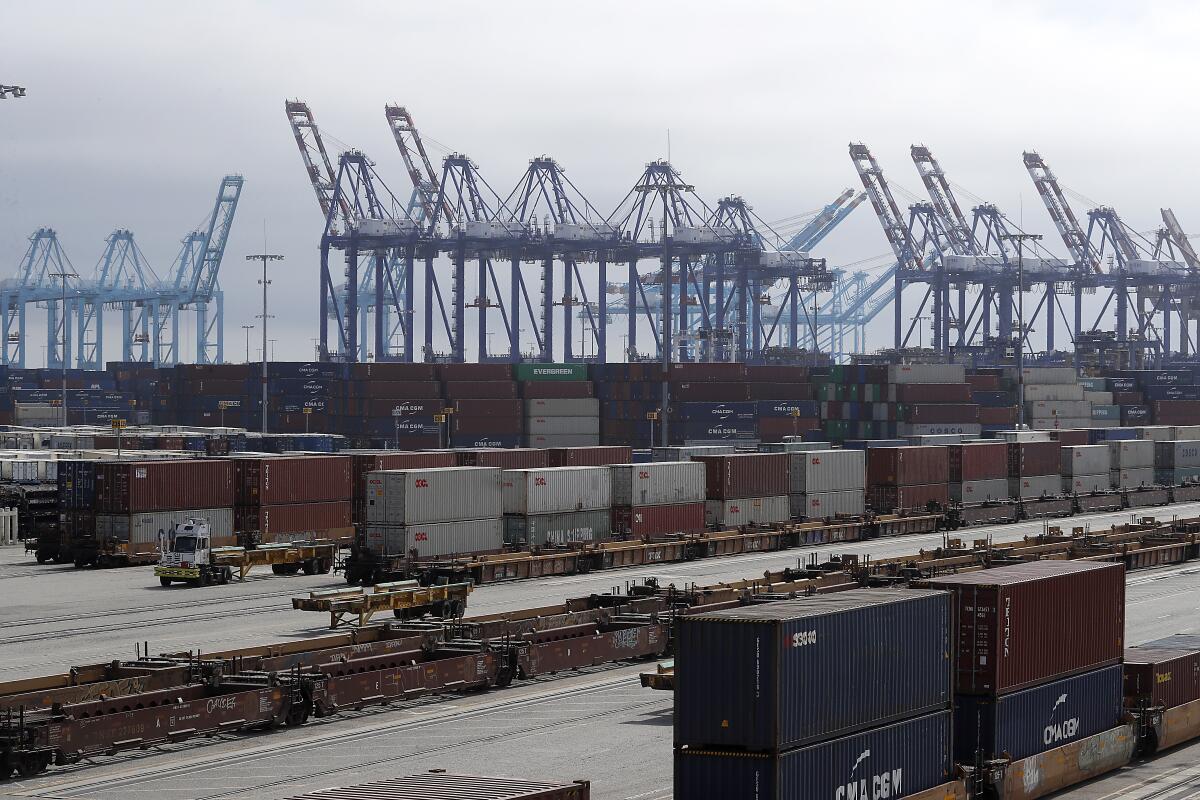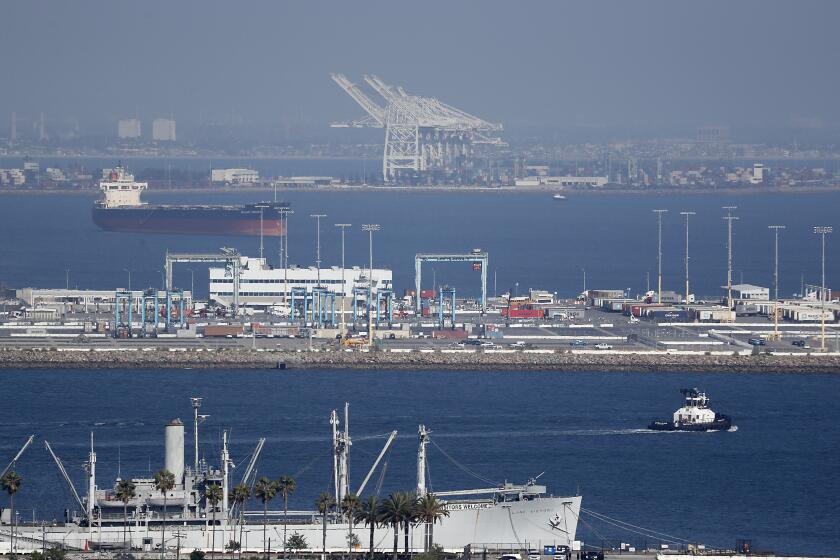California’s job market was on a roll in January. Then the coronavirus hit

California’s economy was humming along in January, with unemployment at a record low and job creation moving at a healthy pace, according to data released Friday.
That was then.
State employment officials every year release January data a month later than usual, in March, so they can mine new surveys to adjust their annual statistics. That late release of the monthly jobs report only becomes an issue when events are unfolding rapidly — as they are amid the coronavirus outbreak.
February jobs numbers will be released March 27 and it won’t be until April, with the release of the March report, that the impact of layoffs this month will be known.
“Delays are a special problem when economic changes are accelerating,” as with the onset of the coronavirus outbreak, said Lynn Reaser, an economist at San Diego’s Point Loma Nazarene University.
In January, California’s unemployment stood at 3.9%, the same as in December, and down from 4.3% a year earlier. That was a record low going back to the 1970s when the current methodology was adopted.
U.S. joblessness was 3.6% in January, the state reported.
Although the pace of California’s job growth had slowed since a recent peak in April, due to an economy close to full employment, bosses added 21,400 jobs to payrolls in January, contributing to a record 119-month expansion.
Year-over-year, California payroll jobs rose by 1.5%, to a total of 17.58 million. The nation’s growth rate was slightly slower, at 1.4%.
But those numbers “are from a California economy that now seems like the distant past,” said Michael Bernick, a former director of the state employment development department who tracks workforce data.
“In just the past two weeks, employment dynamics have moved with unprecedented speed. Major employers began asking workers to work remotely and starting this week, there were the first significant rounds of layoffs. San Francisco’s Financial District, where I work, has become a ghost town with empty offices and empty retail outlets.”
The shutdown of L.A.’s marquee professional sports teams in the shadow of the coronavirus is bad news for the businesses around L.A. Live and Staples Center.
Some economists are predicting a recession this year, while others, including those at UCLA’s Anderson Forecast, say California’s economic growth will slow dramatically without quite contracting.
Employment statistics “will change during the next two months,” Reaser said. “Closures and ‘personal distancing’ will pummel hotels, restaurants, entertainment venues, transportation and many retailers.
“Increases in online shopping, spending on basic consumer goods, groceries and pharmacies, along with expansion in healthcare, will only partially cushion the blow.”
Although the Golden State’s January numbers are dated, they nonetheless offer some comfort in that a strong job market at the beginning of the year will somewhat buffer a coronavirus downturn, economists said.
“The coronavirus outbreak has injected major uncertainty into the 2020 outlook,” said Taner Osman, research manager at Beacon Economics, a Los Angeles consultancy. “But California’s labor market enters this uncertainty from a position of strength, which should help dampen the effect.”
In January, the number of unemployed Californians was 735,300, down by 78,600 compared with a year earlier. That was “the lowest since 1989, despite large gains in statewide population since,” according to the EDD.
That is likely to rise significantly as the virus takes its toll. Although overall data is unavailable, businesses across the state have been shedding workers. At the ports of Los Angeles and Long Beach, where cargo has plunged as China factories went dark, 145 truckers were laid off at Shippers Transport Express on Feb. 27. And hundreds of independent drivers who own their own rigs have lost work.
The nation’s largest port is hurting. That may be a leading indicator of the pain that’s in store for Southern California and the U.S. economy as businesses hunker down to deal with the rapidly expanding new coronavirus.
Ruben Alvarado, 29, was laid off last week from his $4,000-a-month dispatcher job at a small Ontario logistics company, along with two drivers. “We were shocked,” he said. “There was literally no warning. But the owner said he couldn’t afford to keep us because of the coronavirus.”
With his $2,800 monthly rent due, Alvarado said, “I don’t have the money to pay. I’m struggling to find another job, but with terminals closing, companies have lost freight.”
Restaurants and hotels are laying off staff too, although many unionized workers will still be paid, including several thousand at Disneyland Resort, which will close Saturday for the rest of the month.
“Consumers have been the backbone of the recent economic strength but we can’t count on them much longer,” said Sung Won Sohn, an economist at Loyola Marymount University. “Coronavirus has hit almost every industry.”
Leisure and hospitality, he noted, accounts for 11.7% of payroll jobs in the state. Adding trade, transportation and utilities, another deeply affected sector, translates into some 29.1% of the job market, including many low-paid positions, already feeling the coronavirus pain.
“Both the U.S. and California economies are likely to fall into a recession if they’re not already in one,” Sohn predicted.
January’s key sector-by-sector numbers:
- Leisure and hospitality added 7,800 jobs, more than any other sector, as year-over-year payrolls grew by 1.7%.
- Healthcare grew by 6,800 jobs, for a 3% increase over the year.
- Information positions, including many at technology firms, rose by 5,500, and by 4.2% year-over-year.
- Transportation, warehousing, and utilities added 3,400 jobs. The year-over-year was 4.4%.
- Retail trade posted the largest decline, a drop of 2,600 and year-over-year, it decreased by 1.2%.
- Construction payrolls dipped by 2,400 but grew by 2% over the year.
Regionally, Los Angeles County added the highest number of jobs in January (10,600) for a total of 4.96 million. Orange County added 2,100 positions for a total of 1.58 million. The Inland Empire added 1,800 jobs for a total of 1.06 million in Riverside and 933,500 in San Bernardino.
Unemployment stood at 4.5% in Los Angeles County, 2.9% in Orange County, 4.2% in Riverside County and 3.9% in San Bernardino County.
More to Read
Inside the business of entertainment
The Wide Shot brings you news, analysis and insights on everything from streaming wars to production — and what it all means for the future.
You may occasionally receive promotional content from the Los Angeles Times.












